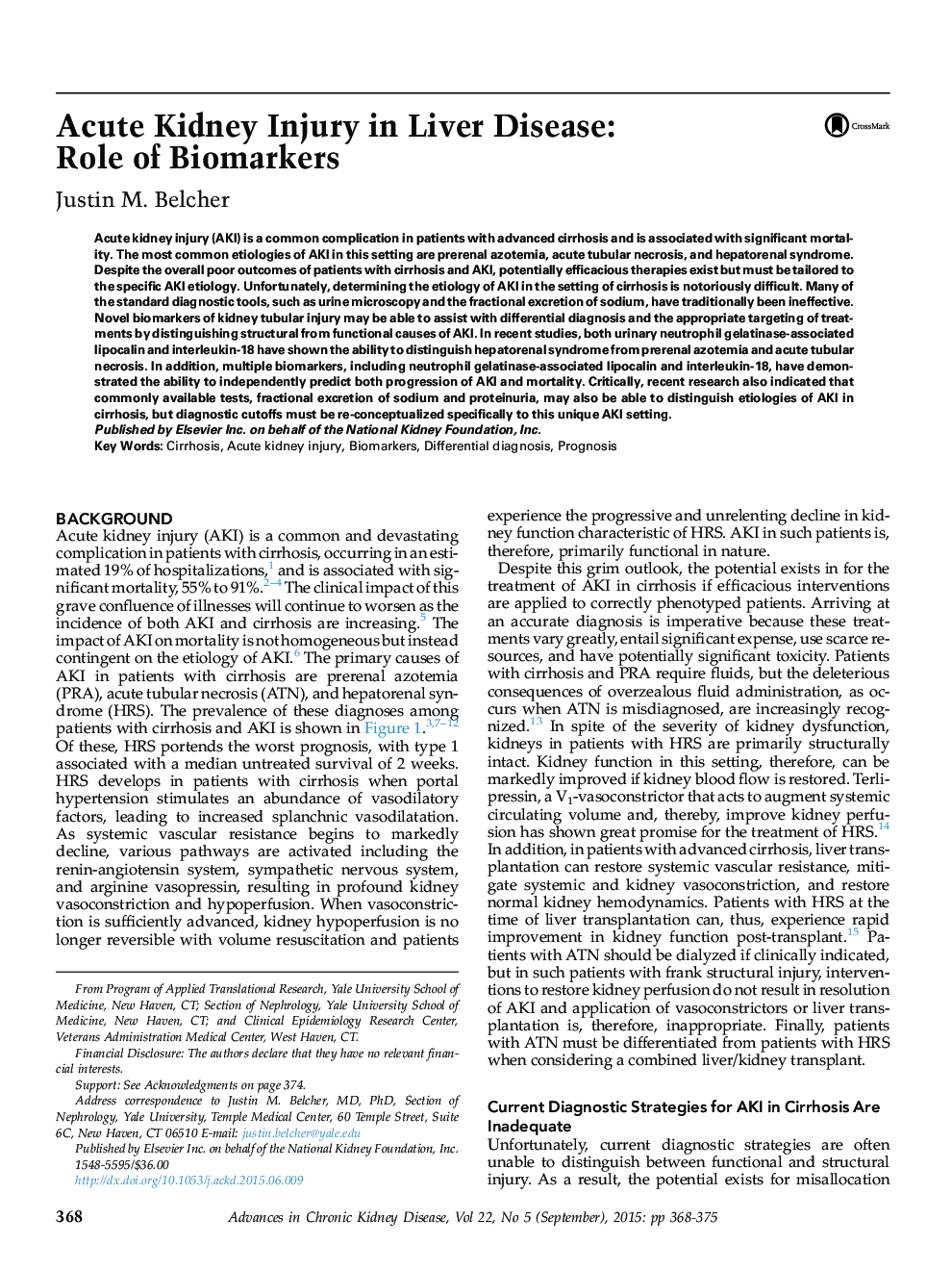| کد مقاله | کد نشریه | سال انتشار | مقاله انگلیسی | نسخه تمام متن |
|---|---|---|---|---|
| 3846306 | 1248317 | 2015 | 8 صفحه PDF | دانلود رایگان |
عنوان انگلیسی مقاله ISI
Acute Kidney Injury in Liver Disease: Role of Biomarkers
ترجمه فارسی عنوان
آسیب کبدی حاد در بیماری کبد: نقش بیومارکرها
دانلود مقاله + سفارش ترجمه
دانلود مقاله ISI انگلیسی
رایگان برای ایرانیان
کلمات کلیدی
سیروز آسیب حاد کلیه، بیومارکرها، تشخیص های افتراقی، پیش بینی،
موضوعات مرتبط
علوم پزشکی و سلامت
پزشکی و دندانپزشکی
بیماریهای کلیوی
چکیده انگلیسی
Acute kidney injury (AKI) is a common complication in patients with advanced cirrhosis and is associated with significant mortality. The most common etiologies of AKI in this setting are prerenal azotemia, acute tubular necrosis, and hepatorenal syndrome. Despite the overall poor outcomes of patients with cirrhosis and AKI, potentially efficacious therapies exist but must be tailored to the specific AKI etiology. Unfortunately, determining the etiology of AKI in the setting of cirrhosis is notoriously difficult. Many of the standard diagnostic tools, such as urine microscopy and the fractional excretion of sodium, have traditionally been ineffective. Novel biomarkers of kidney tubular injury may be able to assist with differential diagnosis and the appropriate targeting of treatments by distinguishing structural from functional causes of AKI. In recent studies, both urinary neutrophil gelatinase-associated lipocalin and interleukin-18 have shown the ability to distinguish hepatorenal syndrome from prerenal azotemia and acute tubular necrosis. In addition, multiple biomarkers, including neutrophil gelatinase-associated lipocalin and interleukin-18, have demonstrated the ability to independently predict both progression of AKI and mortality. Critically, recent research also indicated that commonly available tests, fractional excretion of sodium and proteinuria, may also be able to distinguish etiologies of AKI in cirrhosis, but diagnostic cutoffs must be re-conceptualized specifically to this unique AKI setting.
ناشر
Database: Elsevier - ScienceDirect (ساینس دایرکت)
Journal: Advances in Chronic Kidney Disease - Volume 22, Issue 5, September 2015, Pages 368-375
Journal: Advances in Chronic Kidney Disease - Volume 22, Issue 5, September 2015, Pages 368-375
نویسندگان
Justin M. Belcher,
